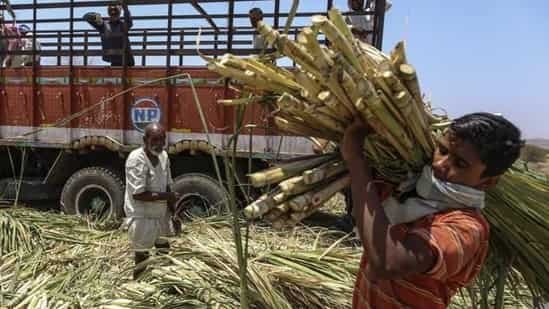Key points:
• The digital repository will aid precise targeting of subsidies, services and policies, the officials added. Under the programme, each farmer of the country will get what is being called an FID, or a farmers’ ID, linked to land records to uniquely identify them.
• The database uses Aadhaar-based data generated from key farm sector programmes such as PM-KISAN, a cash-transfer scheme and is being built under the National e-Governance Plan in Agriculture, a programme launched in the fiscal 2010-11.
• According to MicroSave Consulting, which audited the fertiliser subsidy programme for the state-run think tank Niti Aayog, such cash transfers are likely to face hurdles of “accurate targeting”.
• The Centre spends approximately ₹75,000 crore annually on fertiliser subsidy. The government plans to eventually implement “cash transfers” in place of fertiliser subsidy.
The Centre is in the process of creating for the first time a “digital agri-stack”, a hi-tech national farmers’ database that could give the government and agribusinesses unprecedented insights into the rural economy, people with knowledge of the matter said.
The government is also developing a unified farmer service platform that will help digitise agricultural services delivery by the public and private sectors, officials said. “The data of 4.3 crore (43 million) farmers linked with land records have already been verified and the database will be unveiled shortly,” one of officials said on condition of anonymity.
The digital repository will aid precise targeting of subsidies, services and policies, the officials added. Under the programme, each farmer of the country will get what is being called an FID, or a farmers’ ID, linked to land records to uniquely identify them. India has 140 million operational farm-land holdings.
The database will connect seemingly simple data points: the number of occupational farmers who avail of subsidies, how much land they own, what they grow and which agro-climatic zones they fall in. “These data points will be triangulated by a software that will throw up a far more complex but illuminating picture of the rural and agricultural economy,” the official said. The next step would be to create a model to monetise the data, the official added.
The database uses Aadhaar-based data generated from key farm sector programmes such as PM-KISAN, a cash-transfer scheme and is being built under the National e-Governance Plan in Agriculture, a programme launched in the fiscal 2010-11.
“We have a longstanding problem of accurate farm-economy data. We mostly depend on periodic surveys and the agriculture census. Real-time data will connect farmers and service providers in real-time,” said Ravi Saran, the CEO of Upajak, an Indore-based farmer producer organisation.
The Centre’s Committee on Doubling Farmers’ Income has recommended boosting digital initiatives in the farm sector with tools such as remote-sensing, geographical information system, data analytics, cloud computing and drones. A second official said the centralised farmers’ database will be used to better target subsidies, including fertilisers, cheap crop insurance and dissemination of mobile-based crop advisories.
Farm subsidies worth thousands of crores — including cheap insurance, fertilisers, credit and income transfers — still suffer from leakages because very little information about individual farmers is centrally available. For instance, although the government knows India’s annual fertiliser demand, it has no way of knowing how much fertiliser an individual farmer may actually need, which may vary widely, depending on crops and soil conditions.
There is currently no limit on the number of subsidised fertilisers each farmer can buy. “So, somebody who actually needs five bags of urea may be buying 10 bags and diverting the rest to open markets,” the second official said. The Centre spends approximately ₹75,000 crore annually on fertiliser subsidy. The government plans to eventually implement “cash transfers” in place of fertiliser subsidy.
According to MicroSave Consulting, which audited the fertiliser subsidy programme for the state-run think tank Niti Aayog, such cash transfers are likely to face hurdles of “accurate targeting”. Its report pointed to the need for a farmers’ database. An Aadhaar-enabled database that maps actual farm sizes, cropping patterns and agro-climatic zones can create district-level data points to save leakages of aid, the official added.

